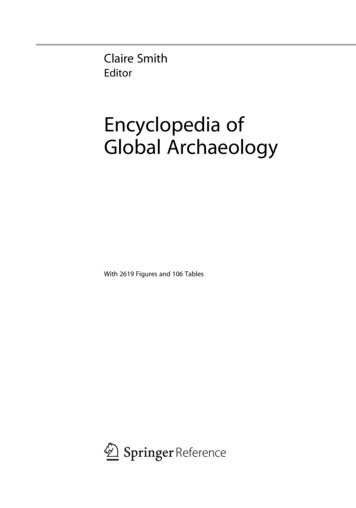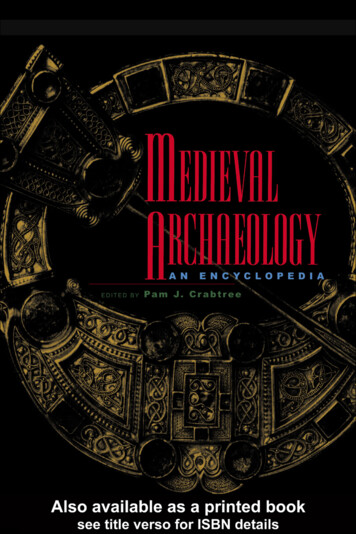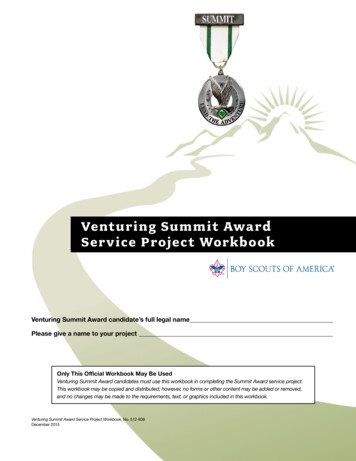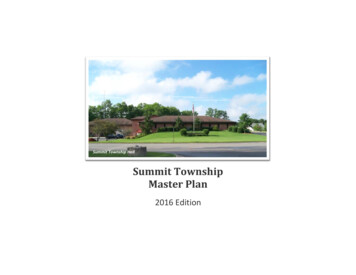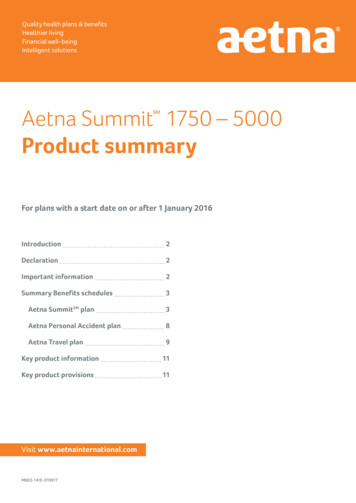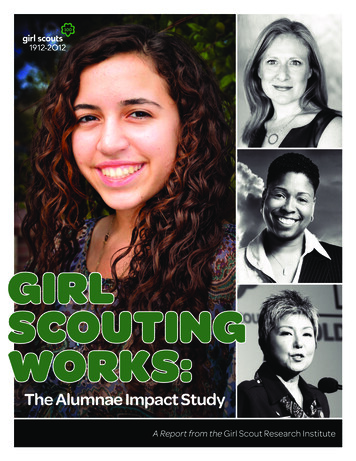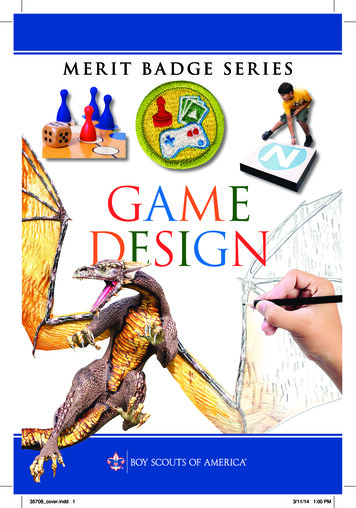
Transcription
p istnerhighur s,youantestARCHAEOLOGYs.ORGSTEM-Based
BOY SCOUTS OF AMERICAMERIT BADGE SERIESARCHAEOLOGY“Enhancing our youths’ competitive edge through merit badges”
Requirements1. Tell what archaeology is and explain to your counselor howit differs or relates to other fields of study such as anthropology, geology, paleontology, and history. Explain how archaeology is different than artifact collecting or treasure hunting.2. Describe each of the following steps of the archaeologicalprocess: site location, development of background researchand a research design, site survey and fieldwork, artifactidentification and examination, interpretation, preservation,and information sharing.3. Describe at least two ways in which archaeologists determinethe age of sites, structures, or artifacts. Explain whatabsolute dating and relative dating are.4. Learn about a combined total of five archaeological siteslocated both within and outside the United States.a. For EACH site you research, point it out on a map andexplain how it became known to archaeologists. Describesome of the information about the past that has beenfound at each site. Explain how the information gainedfrom the study of these sites answers questions thatarchaeologists are asking and how the information maybe important to modern people. Compare the relativeages of the sites you research.b. Choose ONE of the sites you picked and give a shortpresentation about your findings to a Cub Scout pack,your Scout troop, your school class, or another group.5. Do the following:a. Learn about the federal laws and international conventions that protect archaeological sites. Find out if your35855ISBN 978-0-8395-5000-6 2021 Boy Scouts of America2021 Printing
state, county, or local government has regulations thatapply to archaeological or historic sites.b. Identify a national, international, or local organizationthat helps to protect archaeological sites.6. Do the following:a. Explain why it is important to protect archaeological sites.b. Explain what people should do if they think they havefound an artifact.c. Describe the ways in which you can be a protector ofthe past.7. Do ONE of the following and discuss your findings withyour counselor:a. Visit a museum to observe how artifacts aid inconveying history.b. Present to your counselor a significant family artifact/heirloom and discuss its history.c. Make a list of the trash your family throws out duringone week. Discuss with your counselor what archaeologists might learn about you and your family if theyfound your trash a thousand years from now.8. Research a group of people who lived in your area morethan 100 years ago. Find out about their ways of life,including housing, clothing, arts and crafts, tools, tradeand markets, rituals and religions, and diets, and theirrelationships with other groups of people in the area.Describe what you would expect to find at an archaeologicalsite where these people lived. Explain how these peopleinfluenced your current community. three career opportunities in archaeology. Pick one9. Identifyand explain how to prepare for such a career. Discuss withyour counselor what education and training are required,and explain why this profession might interest you.ARCHAEOLOGY 3
10. Do either A or B of the following:a. With your parent’s and counselor’s permission, assista qualified archaeologist for at least eight hours with aproject being worked on. Projects may include surveying,site monitoring, site stabilization, excavation, laboratoryanalysis, use of digital archaeological technology, or public outreach. Describe your involvement in the project,what you learned about archaeology, and the steps ofarchaeological inquiry. Note: Visiting an archaeological site will require advanceplanning. An archaeological site during study can be adangerous place. While there, you will need to closely follow the archaeologist’s directions and comply with all thesafety procedures. Be aware of the changing conditions atthe site.b. With your counselor’s approval, take part in a simulatedarchaeological project designed by a qualified archaeologist. The project must include the use of a simulatedarchaeological site including artifacts and features for thesite. Using the steps of archaeological inquiry, analyzethe “artifacts and features” and document the spatialrelationships of the “artifacts and features” at the simulated site. Explain how the environment and time can affect theinterpretation of an artifact and the overall archaeologicalsite. Tell how you would share the results of your analysis with other researchers and the public. Note: To find out how to make a simulated archaeologicalsite, talk with a professional archaeologist, trained avocational archaeologist, museum school instructor, juniorhigh or high school science teacher, advisor from a localarchaeology society, or other qualified instructor. nder the supervision of a qualified archaeologist or11. Uinstructor, do ONE of the following:a. Help prepare an archaeological exhibit for display in amuseum, visitor center, school, or other public area.b. Use the methods of experimental archaeology to re-createan item or to practice a skill from the past. Write a briefreport explaining the experiment and its results.4 ARCHAEOLOGY
Archaeology Resources.Archaeology ResourcesScouting LiteratureAmerican Cultures, American Heritage,Archery, Architecture, Art, Astronomy,Basketry, Chemistry, Genealogy, Geology,Indian Lore, Leatherwork, Metalwork,Pioneering, Pottery, Scouting Heritage,Sculpture, Surveying, Textile, and WoodCarving merit badge pamphletsWith your parent’s permission, visitthe Boy Scouts of America’s officialretail website, www.scoutshop.org,for a complete listing of all meritbadge pamphlets and other helpfulScouting materials and supplies.BooksBarnes, Trevor. Archaeology.Kingfisher, 2004.Constable, Nick. World Atlasof Archaeology. ThalamusPublishing, 2009.Deetz, James. In Small Things Forgotten:An Archaeology of Early AmericanLife. Anchor Books, 1996.Devereux, Paul. Archaeology: The Studyof Our Past. Gareth Stevens, 2002.Dubowski, Mark, and Cathy EastDubowski. Ice Mummy: TheDiscovery of a 5,000-Year-Old Man.Houghton Mifflin Harcourt, 2000.Fagan, Brian M. Archaeologists:Explorers of the Human Past.Oxford University Press, 2003.———. The Great Journey: The Peoplingof Ancient America. University Pressof Florida, 2004.———. Time Detectives: How ScientistsUse Modern Technology to Unravelthe Secrets of the Past. Simon &Schuster, 1996.Folsom, Franklin, and Mary EltingFolsom. America’s AncientTreasures, 4th ed. University of NewMexico Press, 1993.Giblin, James Cross. Secrets of theSphinx. Scholastic, 2004.Greenberg, Lorna, and Margot F. Horwitz.Digging Into the Past: Pioneers ofArcheology. Scholastic, 2001.Greene, Meg. Buttons, Bones and theOrgan-Grinder’s Monkey: Tales ofHistorical Archaeology. LinnetBooks, 2001.ARCHAEOLOGY 5
Archaeology Resources.Hansen, Joyce, and Gary McGowan.Breaking Ground, Breaking Silence:The Story of New York’s AfricanBurial Ground. Henry Holt, 1998.Harrison, Peter D. The Lords of Tikal:Rulers of an Ancient Maya City.Thames & Hudson, 2000.Hawass, Zahi. Curse of the Pharaohs:My Adventures With Mummies.National Geographic Society, 2004.James, Simon. Eyewitness: AncientRome. DK Publishing, 2008.Kelly, Robert L., and David HurstThomas. Archaeology: Down toEarth, 5th ed. CengageLearning, 2013.Laubenstein, Karen J. ArchaeologySmart Junior: DiscoveringHistory’s Buried Treasure.Random House, 1997.Lauber, Patricia. Who Came First?New Clues to Prehistoric Americans.National Geographic Society, 2003.Lerner Geography Department.Sunk! Exploring UnderwaterArchaeology. Lerner, 1994.Letts, Cali A. and Jeanne M. Moe. ProjectArchaeology: Investigating Shelter.Montana State University, 2009.Lister, Robert H., and Florence C. Lister.Those Who Came Before: SouthwesternArcheology in the National ParkSystem, 2nd ed. Southwest Parks andMonuments Association, 1994.Lourie, Peter. The Lost World of theAnasazi: Exploring the Mysteriesof Chaco Canyon. Boyds MillsPress, 2007.6 ARCHAEOLOGYMcIntosh, Jane R. Eyewitness:Archeology. DK Publishing, 2000.———. The Practical Archaeologist:How We Know What We KnowAbout the Past.Thames & Hudson, 1999.Putnam, James. Eyewitness: Pyramid.DK Publishing, 2011.Rathje, William L., and Cullen Murphy.Rubbish! The Archaeology of Garbage.University of Arizona Press, 2001.Samford, Patricia, and David L.Ribblett. Archaeology for YoungExplorers: Uncovering History atColonial Williamsburg. ColonialWilliamsburg Foundation, 1995.Sharer, Robert J., and Wendy Ashmore.Archaeology: Discovering Our Past,3rd ed. McGraw-Hill, 2002.Smith, K.C. Exploring for Shipwrecks.Franklin Watts, 2000.Thomas, David Hurst. Exploring AncientNative America: An ArchaeologicalGuide. Routledge, 1999.Walker, Sally M., and Douglas W.Owsley. Their Skeletons Speak:Kennewick Man and thePaleoamerican World. CarolrhodaBooks, 2012.Wheatley, Abigail, and Struan Reid.The Usborne Introduction toArchaeology. Scholastic, 2005.Yeager, C.G. Arrowheads and StoneArtifacts: A Practical Guide forthe Amateur Archaeologist, 3rd ed.WestWinds Press, 2016.
.Archaeology ResourcesOrganizations and WebsitesAmerican AnthropologicalAssociation2300 Clarendon Blvd., Suite 1301Arlington, VA 22201Telephone: 703-528-1902Website: www.aaanet.orgArchaeological Conservancy1717 Girard Blvd. NEAlbuquerque, NM 87106Telephone: orgArchaeological FieldworkOpportunities fobArchaeological Institute of America44 Beacon St.Boston, MA 02108Telephone: 857-305-9350Website: www.archaeological.orgCanyon Country Discovery Center1117 N. Main St.Monticello, UT 84535Toll-free telephone: 800-525-4456Website:https://ccdiscovery.org/Center for American ArcheologyP.O. Box 366Kampsville, IL 62053Telephone: 618-653-4316Website: www.caa-archeology.orgCenter for the Study ofthe First AmericansDepartment of AnthropologyTexas A&M UniversityCollege Station, TX 77843-4352Telephone: ow Canyon Archaeological Center23390 Road KCortez, CO 81321Toll-free telephone: 800-422-8975Website: www.crowcanyon.orgEarthwatch Institute1380 Soldiers Field RoadBoston, MA 02135Toll-free telephone: 800-776-0188Website: www.earthwatch.orgElden Pueblo Archaeological Project1824 S. Thompson St.Flagstaff, AZ 86001Telephone: 928-527-3452International Council on Monumentsand Sites (ICOMOS)Website: www.icomos.org/en/Mississippi ValleyArchaeology CenterUniversity of Wisconsin–La Crosse1725 State St.La Crosse, WI 54601Telephone: 608-785-8463Website: http://mvac.uwlax.eduNational Association ofState LOGY 7
Archaeology Resources.National Conference of StateHistoric Preservation OfficersSuite 342 Hall of the States444 N. Capitol St. NWWashington, DC 20001Telephone: 202-624-5465Website: www.ncshpo.orgNational Park Service1849 C St. NWWashington, DC 20240Telephone: 202-208-6843Website: www.nps.gov/historyProject Archaeology2-128 Wilson HallMontana State UniversityBozeman, Montana 59717Telephone: 406-994-6925Website: https://projectarchaeology.orgSociety for American Archaeology1111 14th St. NW, Suite 800Washington, DC 20005-5622Telephone: 202-789-8200Website: www.saa.orgSociety for Historical Archaeology13017 Wisteria Drive, No. 395Germantown, MD 20874Telephone: 301-972-9684Website: https://sha.orgUNESCO World Heritage CenterWebsite: whc.unesco.org/en8 ARCHAEOLOGY
state, county, or local government has regulations that apply to archaeological or historic sites. b. Identify a national, international, or local organization that helps to protect archaeological sites. 6. Do the following: a. Explain why it is important to protect archaeological sites. b. Explain what people should do if they think they have


